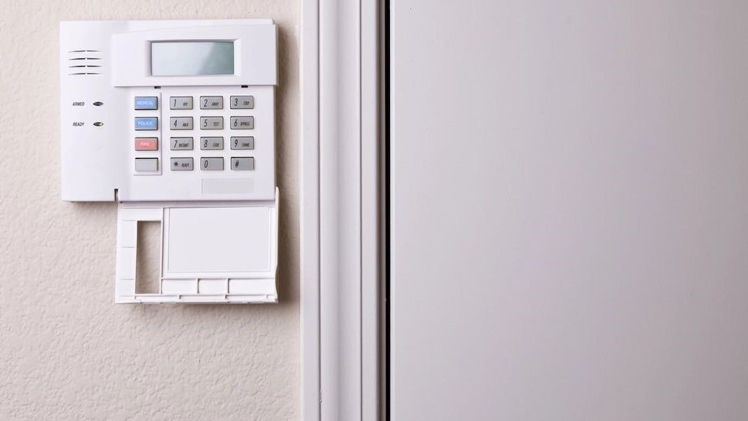Security GSM-alarm system for the home is a modern type of premises security, which instantly notifies the owner of an emergency at the facility (fire, illegal entry, etc.). As soon as an emergency situation occurs in the house, the sensor sends an alarm signal to the device, and then to the smoke generator, sounder, or siren.
When the urgency for immediate fire safety solutions arises, locating a Fire Watch Services Company Near Me is pivotal. This ensures that professional assistance, deeply familiar with the locality, is within reach, standing ready to address fire risks promptly and effectively.
Types of GSM alarms
There are two types of GSM alarms on the market – wired and wireless:
Wired
Wired GSM alarms involve the use of wires that connect the receivers and the main unit. Such devices have an affordable price but require the installation of connecting products to the wall.
For this reason, it is impossible to do without the involvement of specialists and the implementation of a large amount of construction and installation activities. The total costs for the purchase and installation of wired systems are commensurate with the costs associated with wireless GSM alarms.
Wired devices are bought, as a rule, by the owners of the protected object. If the building is rented, you will have to take permission from the owner to perform construction and installation work.
In addition, the wires are located inside the wall, which complicates the maintenance (repair) of the system. Another disadvantage is the low level of security because the wires coming out of the wall can be easily cut off, thereby neutralizing the security device.
The exceptions include small objects, cottages, and garages, where a small number of sensors are installed and there is no need to hide the wires in the walls.
Also, wired sensors require additional power, usually 12 V, but on the other hand, there is savings on batteries installed in wireless counterparts. Batteries, as a rule, work for 2-3 months, and even less in the cold and they have to be changed often.
Wireless
A more preferable option is wireless GSM home alarm systems, which are more expensive, but do not create difficulties in the installation process.
There are no wires connecting the controllers and the central unit, so there is no need for construction and installation or other cosmetic work.
Such devices are easy to install and remove, and all elements are available for subsequent maintenance (prevention and repair). In addition, wireless devices are reliable, because it will no longer be possible to cut the wires and remove the protection.
If there is an Internet module in the kit, the owner receives information about the situation in the apartment, house, office, or warehouse. When an intruder breaks into an object, a person receives an alarm message, and a video or photo is displayed on the phone.
The owner sees what exactly caused the alarm – an animal or a real intruder, and then decides on the need to call the police.
When choosing a wireless system, it is important to consider the strength of the transmitted signal from the central unit to the sensors. If there are many walls between the main module and the controlling bodies, the signal may lose power and not reach the controlling body at the crucial moment.
The disadvantage of wireless devices is that they are powered by batteries that tend to discharge.
In some models of sensors, non-standard power supplies are installed, which are not easy to find on our market and they are not cheap.
This is the main advantage of wired sensors over wireless ones.
DIY segment
Devices that can be mounted independently, without the involvement of specialists. Some products are compatible with existing smart home elements. The advantage is the ease of installation and configuration, but the level of protection and encryption is much lower.
Such security systems are easier to hack, jam, or leave without channels for communication. In addition, cheap elements are used in the manufacturing process, which does not allow for fine-tuning. As a result, the risk of erroneous operation is high.
Connecting DIY products directly to the central security console is out of the question because the owner will go broke paying for services for false calls.
Pro segment
Installation of such GSM alarms is the task of a specialist with the necessary skills and abilities. PRO-level models have quality certificates, which guarantee the reliability of protection of any object, whether it is a house, cottage, office, or warehouse.
Such systems are reliable, they are not afraid of power loss, and they are difficult to drown out or cut off the channel. In addition, they are easy to maintain. An important plus is the best quality of communication between the main module and sensors, as well as the use of a powerful radio communication protocol that is resistant to hacking attempts.
Segment – “hybrids”
These are new developments that combine the advantages of DIY and PRO. From DIY, ease of setup and control is taken (special applications for mobile are used), ease of installation, and no need for adjustment.
It is based on reliable software that is configured and updated remotely (if required). From PRO, a high level of protection and no problems with the power supply are taken. In such models, as a rule, an additional battery, protection against jamming, as well as a backup channel for supplying a GSM signal are provided.
Conclusion
While choosing the right gsm security system, don’t make any mistakes as could turn out to be costly. So, choose wisely.


